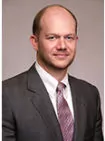Few theories of liability are as elusive and difficult to defend against as "failure to warn." Given the hindsight borne of any accident, it is tempting to suggest, and for a jury to want to believe, that a few simple words of warning would have avoided a catastrophic consequence. Moreover, failure to warn claims are favored by plaintiffs because they do not require the thorny analysis of the risk and utility of the product at issue that design defect claims present. "One simple sentence would have prevented this accident" is a powerful pitch for plaintiff's counsel, and it is one of the hardest arguments for defense counsel to respond to in front of a jury.
The question of burden of proof on a failure to warn claim is therefore a critical one for defense counsel, given the simplicity of the plaintiff's argument. As this Alert details, there is a split in how New York state and federal courts, sitting in diversity, address the question of whether the fact-finder shall presume that the person injured by a product would have heeded an adequate warning if given (the "heeding presumption"). While there are variations from court to court even within the state and federal systems, it is fair to summarize the state of the law as this: there is no heeding presumption in New York state court, but there is such a presumption in federal court. How this can be possible in light of Erie RR Co. v. Tompkins, 304 U.S. 64 (1938) is less than clear, and perhaps creates an issue that will need to be squarely addressed by the Second Circuit.
The split originates with the Second Circuit's decision in Liriano v. Hobart Corp., 170 F.3d 264 (1999). Liriano, a case originally brought in the U.S. District Court for the Southern District of New York pursuant to diversity jurisdiction, which involved a supermarket worker who was injured when he inserted his hand into a substantially altered meat chopper. At trial, the plaintiff offered no evidence that a warning would have altered his conduct, yet a jury returned a verdict in his favor on his failure to warn claim. On appeal, the manufacturer argued that because there was no evidence as to whether the plaintiff would or would not have operated the machine as he did if there had been a warning, the plaintiff failed to demonstrate that the lack of a warning was causally related to his injury. In response to this argument, the Second Circuit stated:
Hobart's argument about causation follows logically from the notion that its duty to warn in this case merely required Hobart to inform Liriano that a guard was available and that he should not use an unguarded grinder. The contention is tightly reasoned, but it rests on a false premise. It assumes that the burden was on Liriano to introduce additional evidence showing that the failure to warn was a but-for cause of his injury, even after he had shown that Hobart's wrong greatly increased the likelihood of the harm that occurred. But Liriano does not bear that burden. When a defendant's negligent act is deemed wrongful precisely because it has a strong propensity to cause the type of injury that ensued, that very causal tendency is evidence enough to establish a prima facie case of cause-in-fact. The burden then shifts to the defendant to come forward with evidence that its negligence was not such a but-for cause.
We know, as a general matter, that the kind of negligence that the jury attributed to the defendant tends to cause exactly the kind of injury that the plaintiff suffered. Indeed, that is what the jury must have found when it ruled that Hobart's failure to warn constituted negligence. In such situations, rather than requiring the plaintiff to bring in more evidence to demonstrate that his case is of the ordinary kind, the law presumes normality and requires the defendant to adduce evidence that the case is an exception. Accordingly, in a case like this, it is up to the defendant to bring in evidence tending to rebut the strong inference, arising from the accident, that the defendant's negligence was in fact a but-for cause of the plaintiff's injury.
Liriano, 170 F.3d at 271. The sole state court authority cited by the Second Circuit for the proposition that the burden of production falls to the defendant is a 1920 Court of Appeals case, Martin v. Herzog, 228 N.Y. 164, 126 N.E. 814 (1920), involving an accident allegedly caused by the failure of a buggy driver to have his headlights on during nighttime driving.
Following Liriano, there have been a host of federal court decisions that have also found that New York law contains a heeding presumption. The most recent is Williams v. Arctic Cat, Inc., ___ F.Supp.2d ___, ___, 2012 U.S. Dist. LEXIS 172843, at *3-4 (N.D.N.Y. Dec. 6, 2012) ("failure to warn law includes a presumption that a user would have heeded warnings if they had been given, and that the injury would not have occurred."); see also Adesina v. Aladan Corp., 438 F.Supp.2d 329, 338 (S.D.N.Y. 2006) (same); Monell v. Scooter Store, Ltd., ___ F.Supp.2d ___, ___, 2012 U.S. Dist. LEXIS 131506, at *35, 2012 WL 4062812, at *12 (N.D.N.Y. Sept. 14, 2012) (same); Davids v. Novartis Pharmaceuticals Corp., 857 F.Supp.2d 267, 286 (E.D.N.Y. 2012) (same); and Anderson v. Hedstrom Corp., 76 F. Supp.2d 422, 441-42 (S.D.N.Y. 1999) (same).
To presume that an accident is caused by the absence of a warning (particularly on the facts of Liriano which involved a 17-year-old, non-English speaking plaintiff who placed his hand into an operating meat presumed in 1920 that a buggy accident was caused by the absence of headlights at night is, in our view, an untenable leap of logic. Moreover, this presumption effectively assumes that which must be proven and requires the defendant to demonstrate that the plaintiff would not have heeded the hypothetical sufficient warning suggested by plaintiff's counsel. In any event, this is not an assumption shared by the state courts that have considered the question.
In state court, without record evidence that the lack of a warning was the proximate cause of the accident, a plaintiff's failure to warn claim fails as a matter of law. In Sosna v. American Home Prods., 298 A.D.2d 158, 158, 748 N.Y.S.2d 548, 549 (1st Dep't 2002), the First Department specifically held that a plaintiff asserting a failure to warn claim must adduce proof "that the user of a product would have read and heeded a warning had one been given." See also Reis v. Volvo Cars of N. Am., 73 A.D.3d 420, 423, 901 N.Y.S.2d 10, 13 (1st Dep't 2010) (same); Mulhall v. Hannafin, 45 A.D.3d 55, 61, 841 N.Y.S.2d 282, 287 (1st Dep't 2007) ("Under well settled law, to prove proximate cause, a plaintiff has the obligation to adduce proof that had a warning been provided, she would have read the warning and heeded it.") Banks v. Makita, U.S.A., 226 A.D.2d 659, 660, 641 N.Y.S.2d 875, 877 (2nd Dep't 1996) ("a plaintiff whose claim is based on inadequate warnings must prove ... that if adequate warnings had been provided, the product would not have been misused.") There is no contrary authority in any of the Departments finding a heeding presumption, as the federal courts have so found.
There are generally several considerations involved in a decision to remove a product liability case from state court to federal court in New York. For example, there are no expert depositions or reports in state court practice, while there are under the Federal Rules of Civil Procedure. Often the transfer to federal court also comes with a better jury pool for the defendant and a judge that will give greater consideration to dispositive motions, though this is not invariably the case. On the other hand, a factor supporting leaving a case in state court is the availability of interlocutory appeals for any order that "affects a substantial right," a much less stringent standard for such appeals than that provided in federal court. However, a factor that is rarely brought up in considering removal is that if a defendant knows at the outset of the litigation that failure to warn is going to be a major theory of the plaintiff's case, deciding to keep the matter in state court may be appropriate despite the other potential downsides of such a decision.
It is important to remember that a cause of action for failure to warn remains susceptible to a motion for summary judgment in New York, and this is true regardless of who has the ultimate burden of proof and persuasion. A heeding presumption can be dismissed as a matter of law through traditional methods for prevailing on a failure to warn claim, such as showing the objective obviousness of the hazard or that the plaintiff was, subjectively, a knowledgeable user of the product. Language barriers to comprehending a warning should also be explored in pre-trial discovery. It is now increasingly important that defense counsel know the precise warning claim being advanced during fact discovery so that appropriate questioning of the witnesses can be conducted.
The well established split between federal and state courts on the question of a heeding presumption is somewhat inexplicable because it has effectively lasted for almost 15 years. In the near future, it will likely be necessary for either the Court of Appeals or the Second Circuit to examine this split and definitely decide New York law regarding the heeding presumption.
The content of this article is intended to provide a general guide to the subject matter. Specialist advice should be sought about your specific circumstances.

